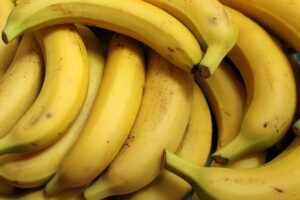Introduction
Protein foam in aquariums can be a common and frustrating issue for fishkeepers. The foam forms on the surface of the water and can be unsightly, as well as potentially harmful to the fish and other aquatic life. In this article, we will explore the causes of protein foam in aquariums and discuss effective methods to get rid of it.
Understanding Protein Foam
Protein foam is formed when organic matter, such as fish waste, uneaten food, and decaying plant material, breaks down in the aquarium. This organic matter releases proteins into the water, which can create a foamy layer on the surface. The foam is often white or off-white in color and can accumulate over time if not addressed.
Causes of Protein Foam
Several factors can contribute to the formation of protein foam in aquariums. Overfeeding is a common cause, as excessive food leads to an increase in organic waste. Poor water quality, inadequate filtration, and lack of water changes can also contribute to the problem. Additionally, certain medications or chemicals used in the aquarium can disrupt the natural balance and lead to foam formation.
Methods to Get Rid of Protein Foam
1. Regular Water Changes: Performing regular water changes is crucial for maintaining good water quality and preventing the buildup of organic matter. Aim for weekly water changes of around 20-30% of the total volume. This helps dilute the proteins and reduce the foam.
2. Adjust Feeding Habits: Overfeeding is a common cause of protein foam. Ensure you are feeding your fish an appropriate amount of food and remove any uneaten food after a few minutes. Consider using a feeding ring or target feeding to prevent excess food from sinking into the substrate.
3. Improve Filtration: Upgrading your filtration system or adding additional filtration can help remove organic waste more efficiently. Consider using a protein skimmer, which is specifically designed to remove proteins and other organic compounds from the water.
4. Use Surface Agitation: Increasing surface agitation can help break up the protein foam and prevent it from accumulating. This can be achieved by adjusting the flow rate of your filter or adding an air stone or surface skimmer to create movement on the water’s surface.
5. Use Chemical Foam Removers: There are commercially available foam removers specifically designed to eliminate protein foam in aquariums. These products work by breaking down the proteins and causing the foam to dissipate. Follow the manufacturer’s instructions when using these products.
Conclusion
Protein foam in aquariums can be a nuisance, but with the right approach, it can be effectively managed and eliminated. Regular water changes, adjusting feeding habits, improving filtration, increasing surface agitation, and using chemical foam removers are all effective methods to get rid of protein foam. By addressing the underlying causes and maintaining good water quality, you can ensure a clean and healthy environment for your aquatic pets.
References
– Fishkeeping World: www.fishkeepingworld.com
– The Spruce Pets: www.thesprucepets.com
– Aquarium Advice: www.aquariumadvice.com












